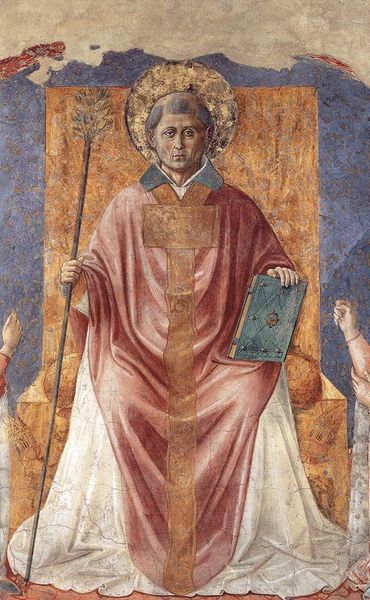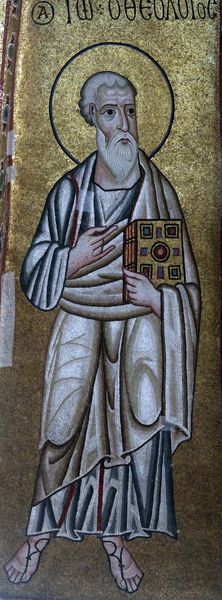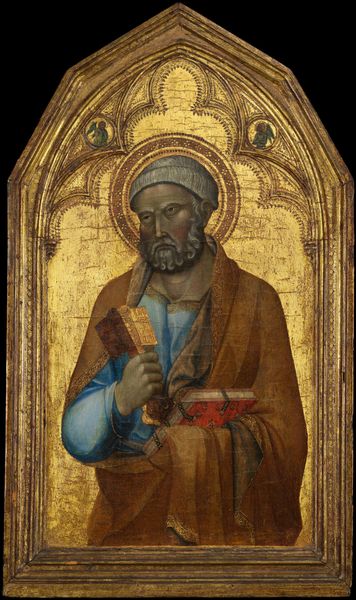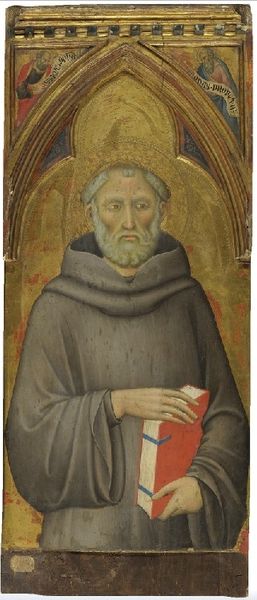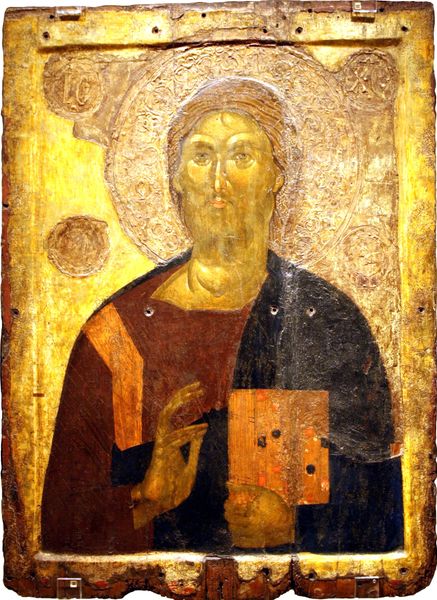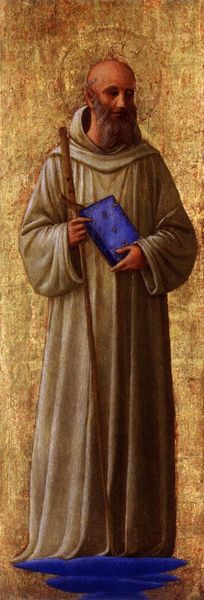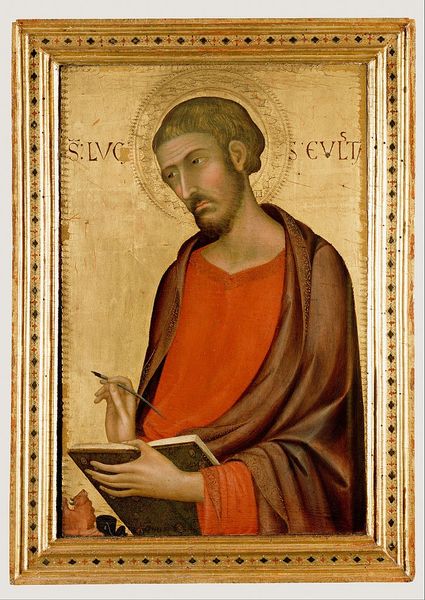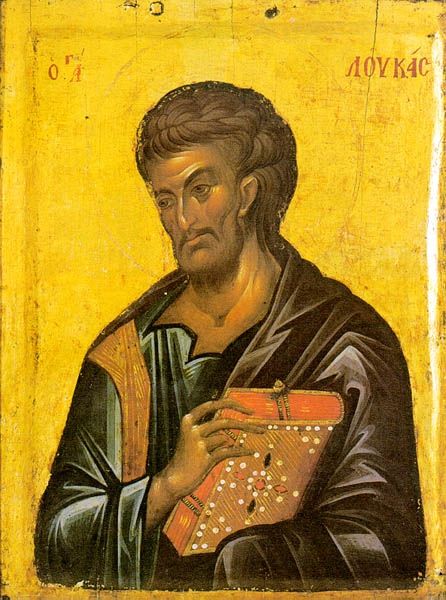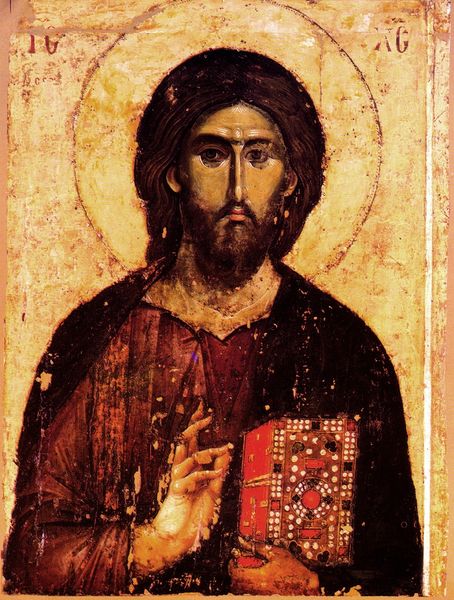
painting, fresco
#
painting
#
holy-places
#
fresco
#
oil painting
#
christianity
#
history-painting
#
italian-renaissance
#
early-renaissance
Copyright: Public domain
Curator: What strikes me immediately is the sheer restraint—the hushed atmosphere of this image. Editor: You’re right. We’re looking at Fra Angelico’s "St. Peter Martyr," a fresco painted around 1442, residing in the Basilica di San Marco, Florence. Tell me more about what informs your reading of the quietude. Curator: Well, look at the figure’s gesture: the finger to the lips, a clear symbol prompting silence. Consider the spatial organization—how he’s framed by that decorative arch, creating a contained, contemplative space. It speaks volumes about the value placed on inner reflection. The color palette, too, with its muted tones, enhances the feeling of tranquility. Editor: Indeed. I find myself thinking about the labor that went into producing a fresco like this—the sourcing and mixing of pigments, the application to wet plaster, each stage a testament to a complex network of production. Fresco required precision; revisions weren’t simple. We could consider this the meeting of meticulous labor and careful design intended for theological contemplation. It must have been created using ultramarine, probably with a blue stone that’s very finely crushed from a mine that's very, very far away, probably with some junior artists creating the architecture or decoration so that he can come and do the really crucial elements and make this moment happen. Curator: It’s a beautiful point, linking material production and symbolic intention. But let’s not overlook the theological context. St. Peter Martyr, a Dominican friar, was known for his preaching and defense of the faith. His presence here is as a testament to devout and informed thinking that is expressed, yet quiet in contemplation. Editor: I agree, though let’s consider the viewers. Were the labor and cost that produced this image actually obvious, signaling a need for quiet, respect, and perhaps adherence? How does our current position—access to mass reproductions—shape our ability to read the original intent? The cost alone meant people listened. Curator: Fascinating how closely intertwined process and meaning can be. Editor: Indeed. This brief exploration into labor has provided a deeper understanding of its presence in society.
Comments
No comments
Be the first to comment and join the conversation on the ultimate creative platform.
